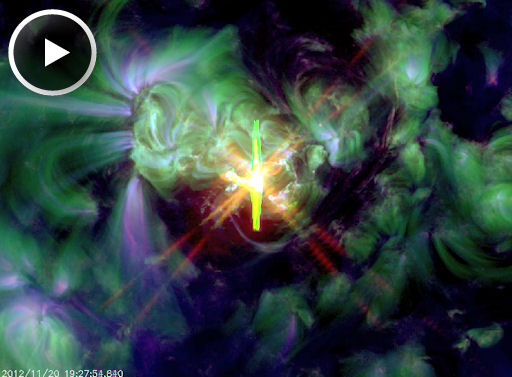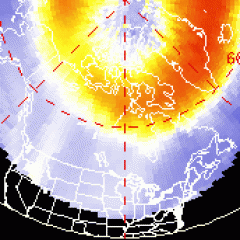~ Space Weather Update~ 4 M Class Flares in a ROW~ Incoming Energy [1]
SOLAR WIND: A medium-speed (~425 km/s) stream of solar wind is buffeting Earth's magnetic field. The solar wind is not blowing hard enough to ignite a full-fledged geomagnetic storm, but it is stirring up some beautiful auroras around the Arctic Circle. Check the realtime aurora gallery [2] for latest images.
M-CLASS SOLAR FLARES: The magnetic canopy of big sunspot AR1618 is crackling with M-class [3] solar flares. This image taken by NASA's Solar Dynamics Observatory shows the extreme ultraviolet flash from one of them, an M1.6-class flare on Nov. 20th at 1928 UT:
This eruption, and another one like it about 7 hours earlier, might have propelled faint coronal mass ejections (CMEs) toward Earth. If so, the impacts would likely commence on Nov. 23rd, with a chance of high-latitude geomagnetic storms following their arrival. Stay tuned for updates. Aurora alerts: text [5], voice [6].

![]()
Solar wind
speed: 392.3 km/sec
density: 2.3 protons/cm3
explanation [7] | more data [8]
Updated: Today at 2147 UT
![]()
X-ray Solar Flares
6-hr max: M3 1530 UT Nov21
24-hr: M3 1530 UT Nov21
explanation [9] | more data [10]
Updated: Today at: 2100 UT
![]()
![]()
![]()
Daily Sun: 21 Nov 12
![]()
![]()
Sunspot AR1618 has a beta-gamma magnetic field that harbors energy for M-class [3] solar flares. Credit: SDO/HMI
![]()
![]()
![]()
Sunspot number: 119
What is the sunspot number? [12]
Updated 21 Nov 2012
Spotless Days
Current Stretch: 0 days
2012 total: 0 days (0%)
2011 total: 2 days (<1%)
2010 total: 51 days (14%)
2009 total: 260 days (71%)
Since 2004: 821 days
Typical Solar Min: 486 days
Update 21 Nov 2012
The Radio Sun
10.7 cm flux: 141 sfu
explanation [13] | more data [14]
Updated 21 Nov 2012
![]()
![]()
![]()
Current Auroral Oval:
![]()
Switch to: Europe, USA, New Zealand, Antarctica
Credit: NOAA/POES
![]()
![]()
![]()
Planetary K-index
Now: Kp= 1 quiet
24-hr max: Kp= 3 quiet
explanation [16] | more data [17]
![]()
Interplanetary Mag. Field
Btotal: 3.2 nT
Bz: 2.0 nT north
explanation [18] | more data [19]
Updated: Today at 2147 UT
![]()
![]()
![]()
Coronal Holes: 21 Nov 12
![]()
![]()
There are no large coronal holes on the Earthside of the sun. Credit: SDO/AIA.



